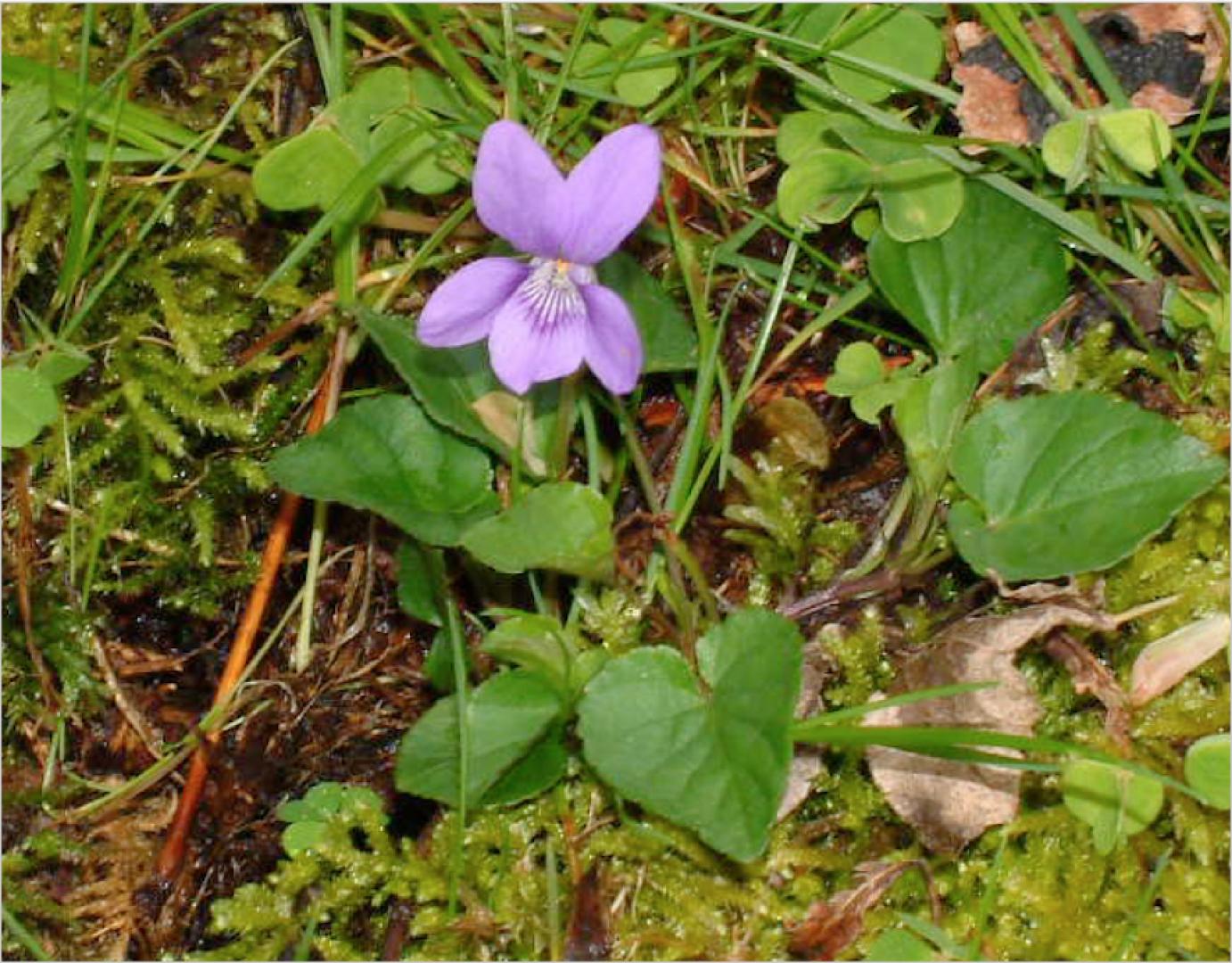Viola riviniana (Common Dog-violet)
THIS tiny violet starts to appear in hedge banks, woodland and old pastures from April onwards.
Violets are members of the family Violaceae, along with their cousins the pansies.
Common dog violets have no scent, hence the unflattering term “dog” to distinguish it from the scented, sweet violet.
Nevertheless, this lovely plant, our most common and most widely distributed violet species, has many interesting and attractive features.
The flowers emerge on long, branched stalks from the fringes of a loose rosette of heart shaped leaves.
The flowers are typically pale purplish-blue, sometimes white, with strong purple nectar guides running down to the base of the lower petal. All members of the violet family are adapted to reduce self-pollination.
The insect alights onto the lower front petal which not only provides a suitable landing platform but extends backwards into a long spur containing the nectaries.
As the insect enters the flower, it follows the nectar guides down to the spur in search of nectar.
In doing so, pollen from its body is quickly deposited onto the protruding stigma.
An effective internal mechanism prevents any of the plant’s own pollen from touching the stigma.
Late on in the season, smaller flowers may develop. They do not open and are described as cleistogamous.
Self-pollination can take place inside the closed flower when cross-pollination has been unsuccessful.
Identification
A number of useful features help us to identify the different members of the violet family, including the length, colour and broadness of the petal spur.
For example, the common dog violet has a white spur, and early dog violet a purple spur.
For our rare Teesdale Violet Viola rupestris, the presence of hairs on the leaf stalk and characteristic scoop-like leaves are important diagnostic features.
This is particularly useful when distinguishing it from the more common dog violet where both can be found growing together on the short limestone turf in upper Teesdale.
Lizzie Maddison is a member of the Upper Teesdale Botany Group






